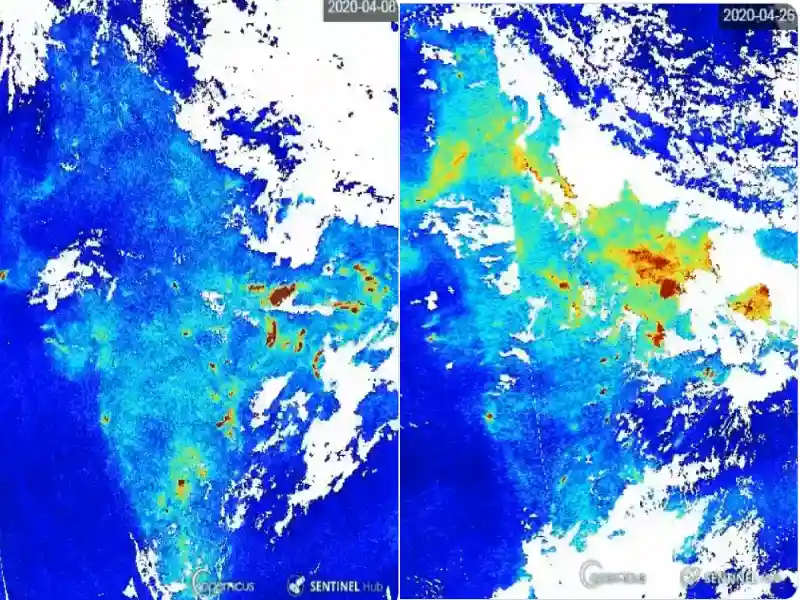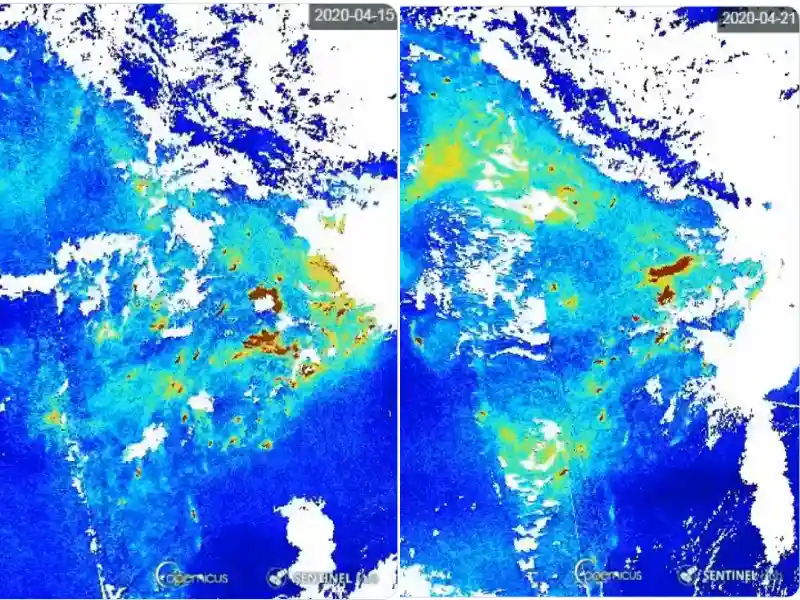Satellite data shows increasing pollution levels in Indian cities including Hyderabad
By Dheeshma
Hyderabad: The air quality index for nitrogen dioxide in Indian cities had seen a substantial drop of up to 40-50 percent following the country-wide lockdown in a bid to slow down the spread of COVID-19. Satellite based data from the Copernicus Sentinel-5P satellite had shown a significant reduction in the averaged nitrogen dioxide concentrations over India from January 1 to March 24 compared to the same time-frame as last year.
For instance, in Delhi, the level of particulate matter (PM2.5) dropped from an unhealthy 165µg/m3 on March 21 to a moderate 64µg/m3 on March 29. Similarly, in Hyderabad, the deserted streets and thin traffic due to lockdown resulted in the PM 2.5 value of 82 and 84 on 26th March and 27th March. The PM 2.5 level in the city was as high as 120 and 139 in February.
However, the latest satellite images from Sentinel have revealed a slight increase in the level of NO2 from 20 April. This increase can be attributed to the relaxation in lockdown restrictions imposed on many Indian cities.
[amp-tweet tweetid="https://twitter.com/ashimmitra/status/1254480406797320193"]
In Hyderabad, on 19th April NO2 level was 22. However, this rose up to 32 in two days by 21st April. The maximum pollution rate in Hyderabad in terms of NO2 was 34 during the month of April. This was on 10th April, Friday. The minimum NO2 level of eight was meanwhile observed on 28th March.
Dr D. Prasad, environmental scientist, Telangana State Pollution Control Board told NewsMeter, “NO2 also forms when there is lightning and thunder. Lightening is a very high temperature activity. Atmosphere has nitrogen of around 78 percent and Oxygen of 21 percent. So NO2 can also rise due to natural reasons. The increase in NO2 rate on certain dates can also be attributed to this reason especially in cities like Hyderabad where the lockdown order is still strict.”
However, on an average every Indian city experienced ‘good’ AQI level during the lockdown period. Meanwhile, Ahmedabad and Bangalore are the only Indian cities that experienced moderate air quality which is hazardous to individuals who are unusually sensitive to nitrogen dioxide. The maximum AQI in Ahmedabad was 51 and minimum 13. In Bangalore the maximum was 54 and minimum 3.
Meanwhile, it needs to be noted that, after the lockdown was imposed, Bangalore followed by Mumbai are the cities which experienced the best air quality in the country. While the air quality stayed below 10 in Mumbai, it was below the range of 20 in Bangalore.
Status of last one week
Coming to the air quality experienced by Indian cities in the last one week, Pune has the worst. On 25th and 26th of April, the AQI of NO2 in Pune stayed between 190 and 195.
On 22nd April AQi in Hyderabad was 41 and on 24th April Ahmedabad recorded an AQi of 828.
Nitrogen dioxide comes from vehicles, power plants, industrial emissions and off-road sources such as construction, lawn and gardening equipment. All of these sources burn fossil fuels. People who live or work near busy roadways can experience high exposure.
